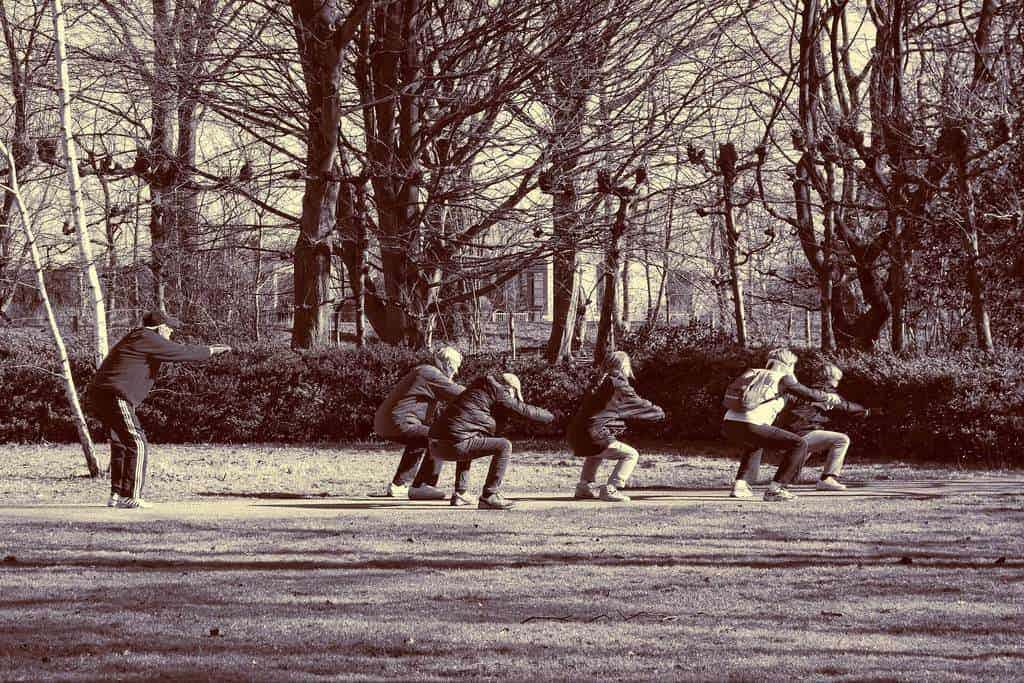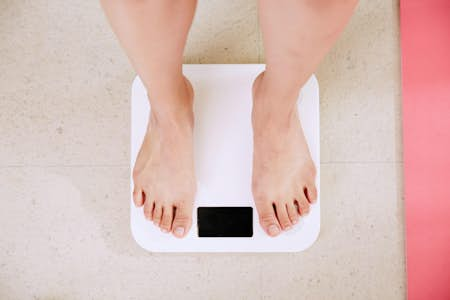Your strength and levels of mobility naturally begin to diminish with age. More worryingly, if you’ve been living a sedentary lifestyle for a long time, your muscles will have atrophied, and you’ll be less flexible. Losses of strength and mobility put you at risk of developing chronic diseases, such as osteoporosis, arthritis and obesity.
By doing some basic bodyweight and mobility exercises every week, you can significantly reduce the effects of muscle loss and bone density. In this post, you will learn some basic strength-building exercises you can easily do at home and don’t require any equipment. Often people have many questions about strength training and what you should or shouldn’t do, so we briefly discuss some answers to these questions.
Ready to transform your life? Whether you're looking for a new pair of running shoes or some shiny home gym equipment, you can find everything you need to fuel your fitness journey with our partner brands.
Can you build muscle after age 50?
Building additional muscle mass isn’t something only younger people can do. Although it is more challenging and you won’t be able to build muscle as you could at 21, people over 50 can still build muscle, providing that they stick to a regular training programme, and eat healthily.
Over 50s who want to build and regain lost muscle mass can be grouped into three types:
- Those who have never stopped training.
- People who have stopped doing strength exercises, but used to train.
- Those who have never done any strength training.
The amount of muscle you will be able to build depends on which category you fall into, and perhaps to a greater extent, your genetics and body type.
There are three main things someone over 50 needs to do to build significant muscle mass:
- Adhere to a comprehensive and regular strength training routine that’s progressive.
- Include whole-body exercises like squats, pushes and presses.
- Eat healthily and get enough of the right nutrients.
While you may not be that interested in building a herculean, vascular physique with bulging muscles, by doing regular strength training, you will be stronger and more capable of doing what you used to do. Your resting metabolic rate will be higher, which helps to burn fat, and above all else, you will improve your quality of life.
We spoke to Jack Lovett from Spartan Performance, who told Health Times: "Appropriate strength training puts years onto and crucially into your life. If you don't lift weights, you will lose muscle and age faster. This leads to an increased risk of injury and worsening metabolic health with age. Movement truly is medicine and is something I advocate for all."
Basic strength training exercises
If you’re over 50 and have never lifted a weight before, beginning training with weights might be difficult, particularly if you’re over 65. If you want to be able to lift weights and build significantly more muscle, you need to start with the basics first. You might then be able to progress to using weights if you have regained some muscle mass and have become stronger.
The following exercises are for people over 50 who still have some strength, but have either never trained before, or have been inactive for a considerable length of time. If you have very little strength, and find it difficult to do things like making your bed, or going up the stairs, have a look at these easier exercises.
Warm Up With These Dynamic Stretches First
To avoid injury, you should do these dynamic stretches and warm your body up first before moving onto the strength exercises.
Hip circles
Doing hip circles will loosen your hip joints, and help to improve your overall hip mobility.
- Stand on one leg and hold on to something for support.
- Bring your other leg out to the side slightly, and gently swing it in small circles.
- Do 20 circles on each leg.
- After a few weeks, you could try and do bigger circles.
Spinal rotations
Spinal rotations help to loosen the muscles in your lower back and sides.
- Standing with your feet shoulder-width apart, hold your arms out to the side and at about shoulder height.
- Keeping your torso still, slowly rotate your body from side-to-side.
- Perform 10 rotations.
Arm circles
These will help lubricate your shoulder joints and increase your shoulder mobility.
- Hold your arms out at shoulder height.
- Starting with small circles, slowly circle your arms backwards and work up to bigger circles. Do 20 circles.
- Now circle your arms forwards 20 times more.
Jog and quad stretch
By jogging on the spot and stretching your quadricep muscles, you will warm up your legs and reduce your chance of getting an injury.
- Begin by lightly jogging on the spot for around 10 seconds.
- Bring one leg behind you and feel your quad stretch. You don’t need to hold it like you would for a static stretch.
- Return to jogging on the spot for a few seconds.
- Do the same stretch, but with your other leg.
- Complete 5 stretches on each leg.
Leg swings
Leg swings stretch your hamstrings, quad and hip muscles.
- With one hand, hold onto something stable like the back of a chair or a bannister railing, and support yourself on one leg.
- Gently swing your other leg backwards, and then forwards. That’s one repetition.
- Use the momentum of your leg to keep it moving.
- Don’t swing your leg too far forwards or backwards.
- Complete 10 reps on each leg.
After completing the above dynamic stretches, there should be some elevation in your heart rate, and you should feel warmer.
Basic Strength Training Exercises
Squats
Squats are a fantastic exercise for strengthening your whole lower body. After just the first few weeks of training, you should start to notice the difference in your ability to go up and down stairs.
- Stand with your feet about shoulder-width apart, bend your legs and lower yourself down while leaning forwards slightly.
- Keep your spine neutral.
- You can put your arms out in front of you to help with balance.
- Once your hips are at around a 45-degree angle, push your heels into the floor and straighten your legs while bringing your hips forward.
- If you struggle with lowering yourself down, try going down just a bit of the way, and then come back up.
- Try 10 reps per set.
Lying glute bridges
Glute bridges will help bring back some strength to your hip and glute areas, particularly if you have spent your working life sitting in a chair.
- Lying on your back, bend your knees and push your heels into the floor to lift your buttocks and hips off the floor.
- Form a straight line with your knees, hips and shoulders.
- Squeeze your glutes hard while pushing your heels into the floor.
- Draw your abs in to help prevent your back from overextending.
- Hold the above position for a few seconds.
- Gently lower your hips back down to the floor.
- That’s one rep. Try to do 10.
Wall presses
These will help to improve your overall upper body strength. If you find these too easy, you could try doing press-ups on your knees.
- Stand a few feet away from a wall, put your hands against it at shoulder-width apart, and about level with your head.
- Bend your elbows while lowering your chest to the wall. Keep your body straight.
- Gently push your chest away from the wall until you’re at the starting position.
- Perform 10 reps.
Back extensions
Back extensions will help to strengthen your lower and middle back.
- Lay down on your front with your hands under your chin and elbows bent.
- Gently raise your torso off the floor and feel the movement working your lower back.
- Aim to perform 10 reps.
Crunches
Crunches are a staple exercise in a core strengthening routine and will help reactivate your core muscles that may have been inactive for a long time.
- Lying on your back with your knees bent, place a hand on each side of your head and keep your elbows flat.
- Imagine you have a tennis ball between your chin and your chest so that when you crunch up with your abs, your chin doesn’t move. It can help if you stare up at a spot on the ceiling behind you.
- Gently lift your torso off the floor while looking up at the ceiling and keeping your chin straight.
- Lower yourself back down to resting position and repeat.
- Try to do 10 reps per set.
Remember to stretch at the end of each training session. Hold the stretches for 20-30 seconds and stretch each area you have worked.
How many sets of the above exercises should you do?
If you’re still reasonably capable of moderate level intensity exercise, try to do 2 sets of each exercise. Each week you can add an extra set, or do more reps per set. After a month or so, you might want to consider doing some more difficult bodyweight exercises, and after some light weight training.
But if you find the exercises difficult, try your best to complete 1 set, and build up slowly until you can do more.
How often to do the strength exercises
Aim to do a full strength workout 3 times per week, and rest for at least a day in between sessions. Once you have built up greater levels of strength, you could do it 4 times a week, and add more exercises.
If after a month or so of doing the above weekly routine you want to mix things up a bit, you could try the workout in the YouTube video below. You will need a pair of light dumbbells.
More advanced strength training exercises
For those of you who are perhaps a bit fitter and stronger, and would like to really build your muscles up, take a look at this article here (link to ‘Going to the gym for the first time at 50’ article).









